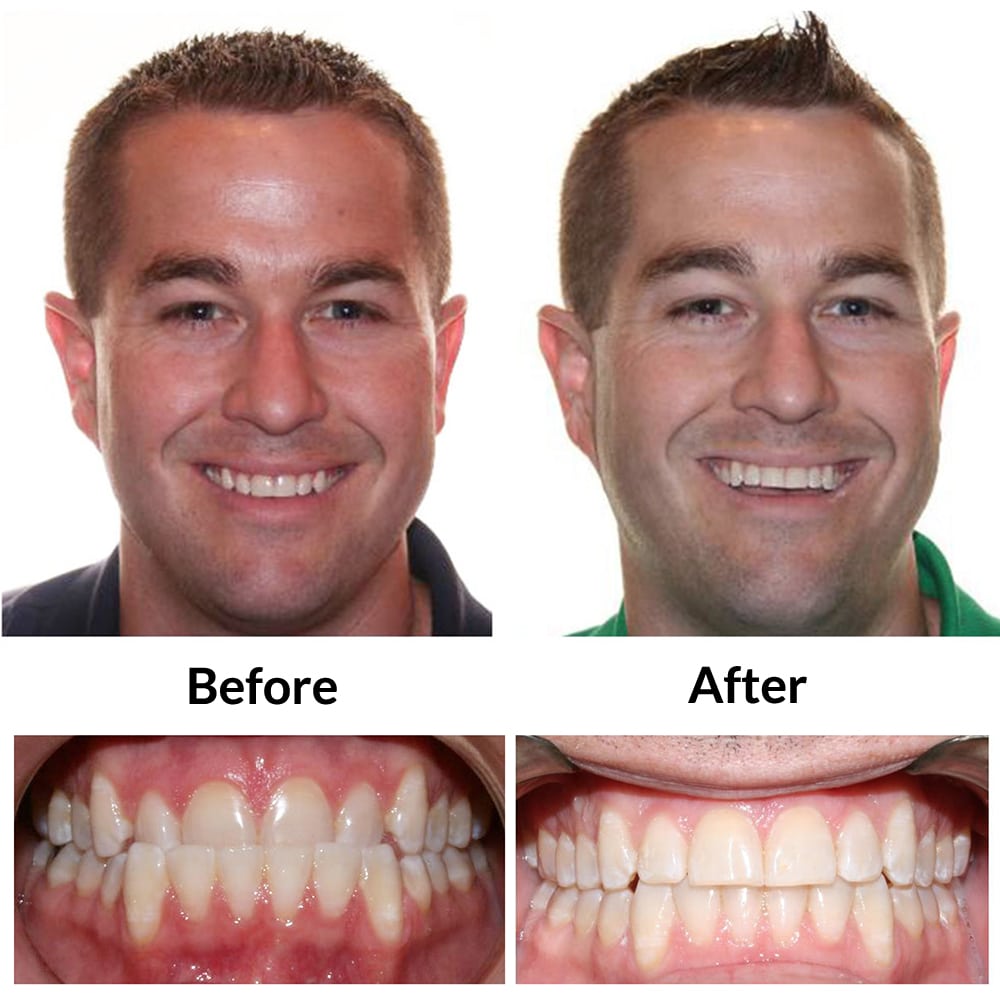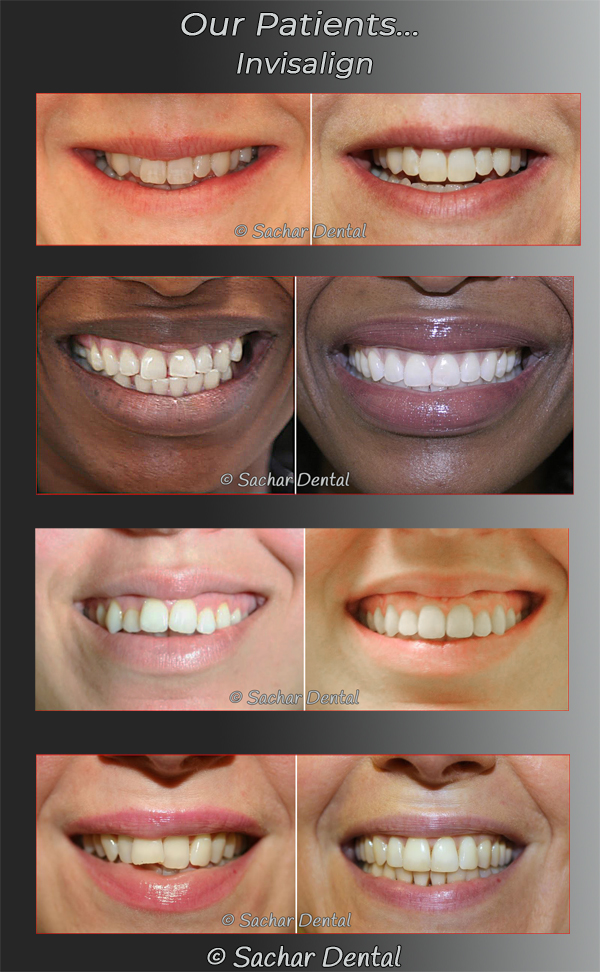Invisalign for Teens: A Modern Solution to Straightening Young Smiles
Invisalign vs. Traditional Dental braces: Which Choice Is Right for You?
When taking into consideration orthodontic treatment, the selection between Invisalign and standard braces presents a number of crucial elements that warrant careful assessment. Invisalign provides a very discreet choice with detachable aligners, while conventional braces give an extra noticeable yet effective solution for serious imbalance. Each alternative includes distinct advantages and drawbacks connected to visual appeals, convenience, therapy duration, and cost. Comprehending these nuances is crucial for making an educated decision that straightens with your individual choices and way of living. The question remains: which alternative will best satisfy your orthodontic demands and expectations?
Review of Therapy Options

In comparison, standard braces are composed of steel braces and cables that are bound to the teeth. This method applies constant pressure over time to attain positioning. While efficient for complex orthodontic issues, standard braces need regular visits for changes and can pose obstacles in maintaining oral health as a result of the problem of cleansing around braces and cords.
Both choices have their advantages, and the selection frequently pivots on details dental conditions, way of life preferences, and client conformity. Inevitably, consulting an orthodontic expert is critical for establishing one of the most ideal treatment strategy customized to private needs. Comprehending the nuances of each choice can substantially influence the overall success of orthodontic treatment.
Aesthetic Factors To Consider
A significant factor influencing the selection in between Invisalign and typical braces is the visual appeal each treatment provides. Invisalign aligners are crafted from clear plastic, making them basically unnoticeable when worn.
In comparison, traditional dental braces are composed of metal brackets and cords, which can be a lot more noticeable. While improvements in orthodontic innovation have actually led to the advancement of smaller sized brackets and tinted elastics, typical braces still maintain a more obvious profile. For some individuals, the presence of dental braces may hinder them from seeking needed treatment.
Inevitably, the selection in between Invisalign and traditional dental braces might pivot on personal preferences pertaining to aesthetic appeals. People that focus on discernment often favor Invisalign, while those who are much less concerned concerning exposure might select conventional dental braces. Recognizing the aesthetic ramifications of each alternative is important for making an educated choice that lines up with one's way of living and choices.
Convenience and Convenience

In regards to convenience, Invisalign aligners are detachable, allowing patients to enjoy their favorite foods without constraint and keep optimum dental health. Cleaning and flossing are simplified, as the aligners can be gotten during these regimens, whereas typical dental braces call for cautious navigating around cords and brackets.
In comparison, traditional dental braces necessitate regular modifications, making them much less hassle-free for those with hectic routines. Overall, the comfort and benefit of Invisalign make it an enticing option for numerous people looking for orthodontic treatment.
Therapy Period and Effectiveness
While both Invisalign and typical dental braces work in remedying oral misalignments, the duration of therapy can vary considerably between both alternatives. Normally, Invisalign therapy can take anywhere from 12 to 18 months, depending on the intricacy of the situation. The clear aligners work by slowly shifting teeth into their desired placements, and normal follow-ups with an orthodontist aid ensure progression remains on course.
On the other hand, typical dental braces commonly require a longer commitment, typically varying from 18 months to three years. This is due to their set nature and making use of braces and wires, which can be more reliable for severe imbalances and intricate cases (Invisalign). The therapy efficiency of typical braces is well-documented, as they enable for precise changes and better control over tooth movement
Ultimately, the selection in between Invisalign and conventional dental braces may depend upon both the awaited therapy period and the specific dental concerns handy. Consulting with an orthodontist is vital, as they can provide tailored suggestions based upon private demands, making sure the chosen approach aligns with preferred timeframes and end results.
Price Contrast and Insurance Policy Alternatives
Expense plays a considerable function in the decision-making process for people taking More about the author into consideration orthodontic therapy, whether going with Invisalign or conventional braces. On average, the price of Invisalign varieties from $3,000 to $8,000, while conventional braces typically set you back between $2,000 and $6,000. Variables influencing these costs consist of the complexity of the case, the period of treatment, and geographical location.
Numerous oral insurance strategies provide partial protection for orthodontic therapies, however the specifics can differ widely. Usually, conventional dental braces may be more regularly covered by insurance policy plans compared to Invisalign, which some insurers classify as a cosmetic treatment.
In addition, several orthodontic techniques supply versatile layaway plan, making both therapy choices a lot more accessible. People should ask about prospective funding alternatives and discounts for upfront repayments. Evaluating the complete price, consisting of insurance coverage advantages and settlement plans, is vital for making a notified choice that lines up with both visual preferences and budget considerations.

Conclusion
In summary, the selection in between Invisalign and typical braces pivots on several variables, including visual choices, comfort, therapy period, and expense. Invisalign uses a very discreet, removable alternative that assists in oral hygiene and nutritional adaptability, while traditional dental braces might be a lot more suitable for complicated oral problems and frequently come with a lower cost point. Eventually, consultation with an orthodontist is vital to evaluate specific circumstances and figure out the most proper therapy option for accomplishing optimum dental placement.
When considering orthodontic treatment, the selection between Invisalign and typical braces offers several essential aspects that warrant careful assessment.Contrasting Invisalign and typical braces exposes unique therapy options for orthodontic adjustment.While both Invisalign and standard dental braces are reliable in correcting dental misalignments, the duration of treatment can differ significantly between the 2 alternatives.Cost plays a significant role in the decision-making process for individuals thinking about orthodontic therapy, whether opting for Invisalign or standard dental braces.In recap, the choice additional reading between Invisalign and find more information standard braces pivots on multiple elements, including aesthetic preferences, comfort, treatment duration, and cost.